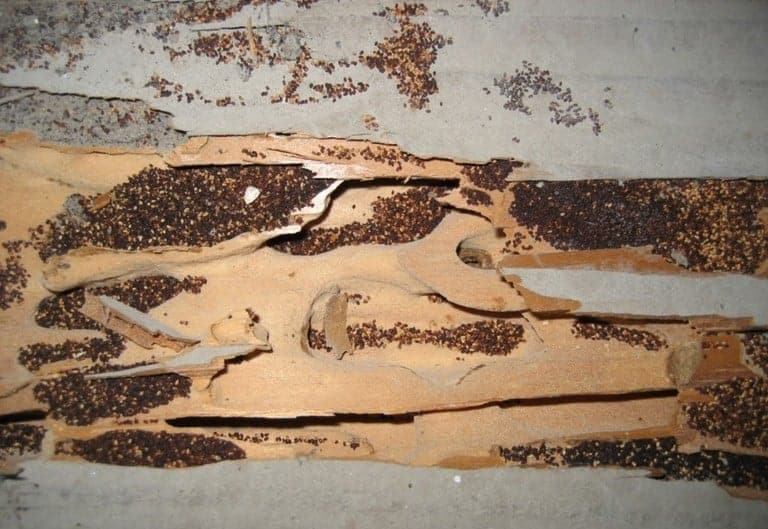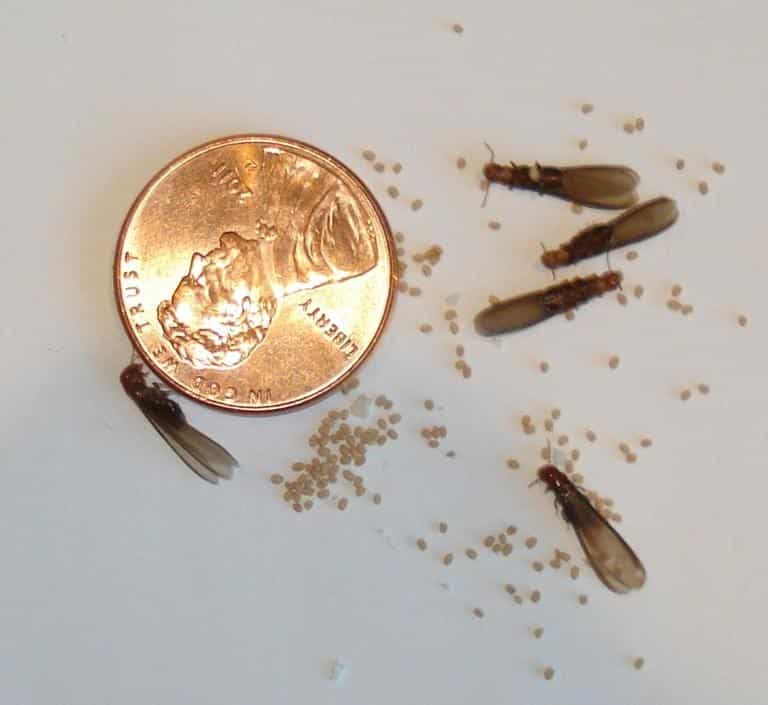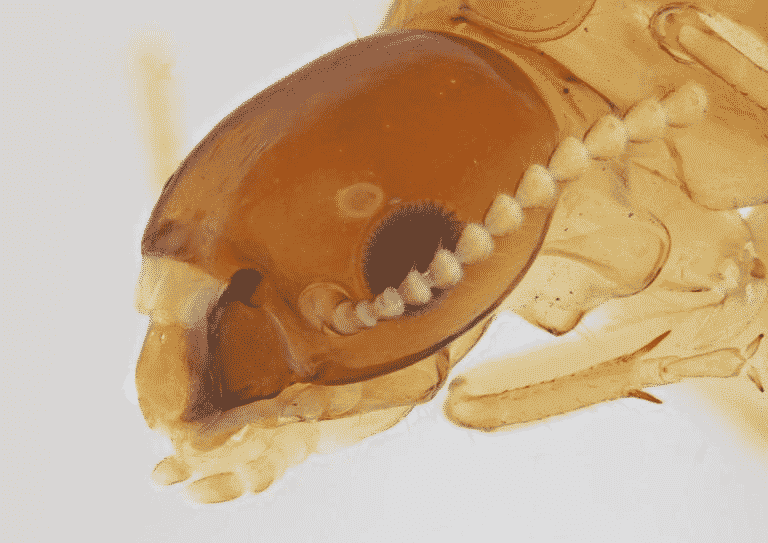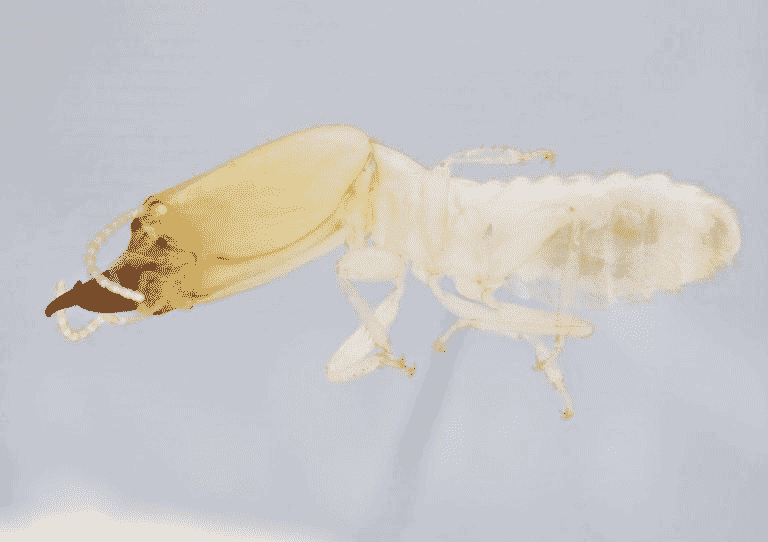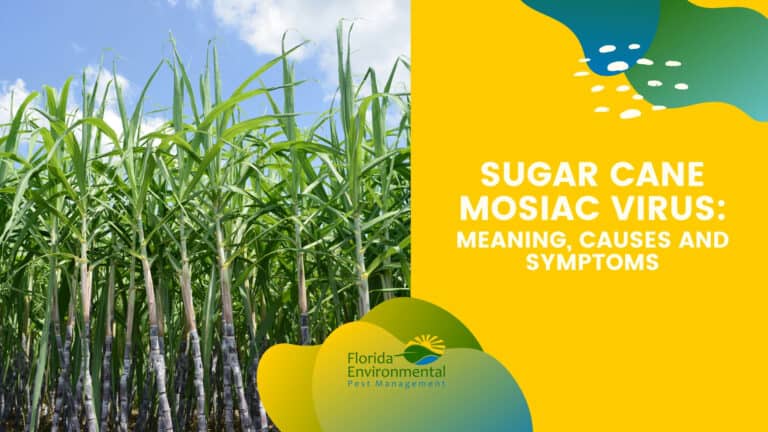Midge Information
Appearance:
Midges are very small, approximately 1-3mm in length. They have dark bodies, which are usually gray or black, and they have two wings that appear clear. They also have long legs and long antennae.
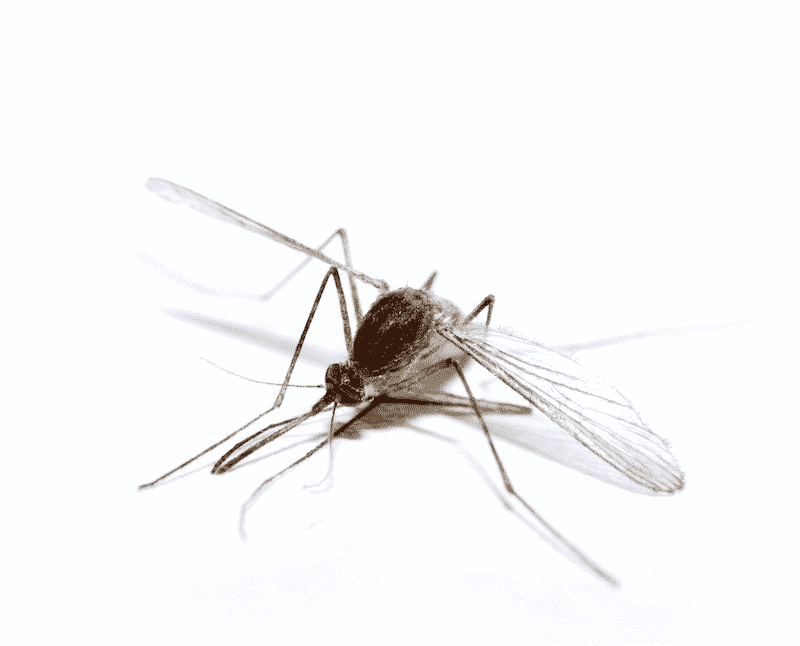
Location and Behavior Patterns:
Midges are often found near water and marshy areas. They are usually in swarms, and can sometimes take on the appearance of a floating cloud. They breed in marshy areas, as well, or in areas that have a lot of wetness. Mornings are their most active time of day, but they can be seen throughout the day, especially if the day is cloudy and moist.
Midges are attracted to flower nectar and plant sap. They are also attracted to people and animals, because they like the bodily scent and the carbon dioxide that people and animals emit. They don’t usually bite, but if they do, their bite can leave a lump on the skin, often red in color. This area may turn very itchy and may swell considerably. They are not known to carry diseases, though, unlike when a mosquito bites a person.
Treatment:
Insecticides are effective for treating Midges and Pantry Pests. Also, eliminating water sources will eliminate their populations, as well. If you have bothersome Midges around your property, allow the affected area to dry out, if possible, and the Midges will die off naturally.
Midge bite appearance?
Midge bites can vary in appearance depending on the individual’s skin and the severity of the bite. However, some common characteristics of midge bites include the following:
Small red bumps: Midge bites typically appear as small, red, and slightly raised bumps on the skin.
Itchiness: Midge bites can be very itchy, and you may feel a strong urge to scratch the affected area.
Clusters: Midge bites often appear in clusters or lines, as the midges tend to bite multiple times in the same area.
Swelling: The affected area may become swollen and slightly tender to the touch.
In general, midge bites are not usually dangerous, but they can be irritating and uncomfortable. If you experience an allergic reaction or if you develop symptoms such as fever or a rash, it’s essential to seek medical attention.
Treatment for midge bite
Although midges are tiny, flying insects, they can leave painful, itchy bites. The following are some steps you can take to treat midge bites:
Wash the affected area: Wash the affected area with soap and water to remove any dirt or bacteria that may have entered the wound.
Apply a cold compress: Apply a cold compress or ice pack to the bite to reduce swelling and relieve pain. You can also use a bag of frozen vegetables or a towel soaked in cold water if you don’t have an ice pack.
Use a topical cream: Apply a topical cream or ointment containing antihistamines or hydrocortisone to the affected area. These can help reduce itching and inflammation.
Take an antihistamine: Taking an oral antihistamine such as diphenhydramine can also help reduce itching and swelling.
Try natural remedies: You can try natural remedies like aloe vera gel, tea tree oil, or witch hazel to soothe the affected area.
It’s important to avoid scratching the bite as this can increase the risk of infection. If the bite becomes infected, seek medical attention.
Quick facts about midges?
Below are some fun facts about midges:
Midges are tiny, flying insects that belong to the family Chironomidae. They are closely related to mosquitoes but do not transmit diseases.
Over 10,000 species of midges are found worldwide in both freshwater and marine environments.
Adult midges typically have a short lifespan of only a few days, during which they mate and lay eggs.
Midges are an essential food source for many aquatic and terrestrial animals, including fish, birds, and bats.
In Scotland, midges are infamous for their nuisance value, with swarms of the insects descending on outdoor activities during the summer months. They are attracted to warmth, moisture, and carbon dioxide, so they tend to be more active in the evenings and near bodies of water.
Midges can survive in extreme environments, such as the Arctic and Antarctic, where they are an essential component of the food chain.
Some species of midges are used in biological research as model organisms to study the genetics and development of insects.
Midges are often mistaken for mosquitoes, but they are smaller and have shorter legs and antennae than mosquitoes. They also have non-piercing mouthparts, unlike mosquitoes, which have a proboscis for sucking blood.
Midge Insect Problem? Call The Professionals
Florida Environmental is the pest control service you can count on when it comes to getting rid of pesky midge insects. These small flies can become a nuisance in large numbers, but with our expertise and experience, we can effectively eliminate them from your home or business. Our team of skilled professionals uses the latest techniques and products to ensure a thorough and long-lasting treatment. We understand that every situation is unique, and we tailor our approach to fit your specific needs. With our commitment to customer satisfaction and our effective midge insect removal services, you can trust Florida Environmental to provide you with a pest-free environment. Contact us today to learn more about our services and how we can help you keep your property free from midge insects.
FAQs
Are midge bites harmful?
Midge bites are generally not harmful to humans but can be uncomfortable and irritating. The bites themselves are typically not dangerous and usually do not transmit any diseases. However, they can cause itching, redness, and swelling at the bite site, which can be uncomfortable and last for several days. In some cases, people may be allergic to midge bites, which can cause more severe symptoms such as blistering or hives.
To reduce the risk of midge bites, it’s recommended to wear long-sleeved shirts and pants, use insect repellent, and avoid outdoor activities during times when midges are most active, such as dawn and dusk. If you do get bitten, over-the-counter anti-itch creams or antihistamines can help alleviate the symptoms. If you have a severe allergic reaction or experience symptoms such as difficulty breathing, seek medical attention immediately.
What attracts midges?
Midges are attracted to a variety of things, including:
Carbon dioxide: Midges are highly sensitive to carbon dioxide, which is produced by the breath of animals and humans. They can detect carbon dioxide from a distance and use it to locate their hosts.
Flower nectar: They feed on high-sugar juices and flower nectar and are usually found in these areas.
Body heat: Midges are also attracted to the heat given off by warm-blooded animals and humans.
Body odor: Midges are attracted to certain odors produced by the skin and sweat of animals and humans. These odors can vary between individuals.
Light: Some species of midges are attracted to light, while others are not. Those that are attracted to light may fly towards artificial light sources like streetlights, porch lights, or windows.
Moisture: Midges are attracted to moist environments and may be more prevalent in areas with high humidity or near bodies of water.
Colors: Some species of midges are attracted to specific colors, such as blue or black.
What keeps midges away naturally?
Several natural remedies can help repel midges and keep them away from your home. Here are a few options:
Essential oils: Certain essential oils such as peppermint, eucalyptus, lavender, and tea tree oil are known to repel midges. You can mix a few drops of these oils with a carrier oil like coconut or olive oil and apply the mixture to your skin.
Citronella: Citronella is a natural insect repellent that can be found in candles, sprays, and lotions. Burning citronella candles or using citronella-based products can help keep midges away.
Garlic: Some people believe that eating garlic can help repel midges. You can also crush garlic and mix it with a carrier oil to make a homemade repellent.
Light-colored clothing: Midges are attracted to dark colors, so wearing light-colored clothing can make you less attractive to them.
Fans: Midges are weak fliers, so using a fan can create enough wind to keep them away from you.
Note that natural remedies may not be as effective as synthetic insect repellents, especially in areas with high midge populations. If you’re in an area with many midges, you may want to consider speaking with an expert pest control company to help rid your home of them.


